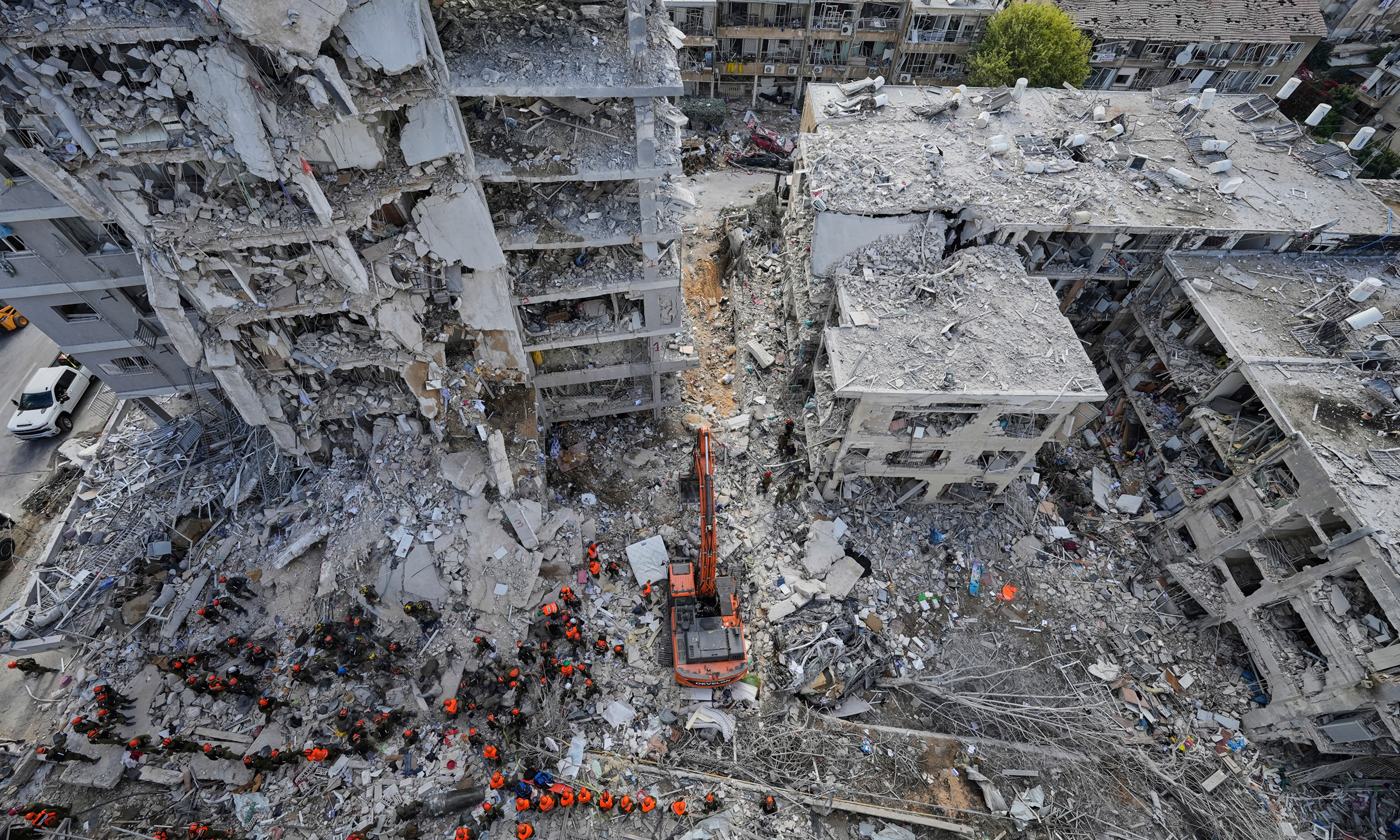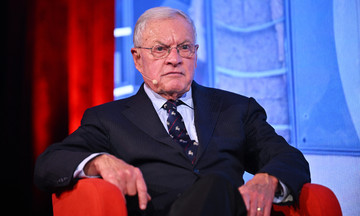The Middle East, a region scarred by decades of conflict, faces a dangerous new flashpoint as direct fighting erupts between Iran and Israel.
Israel's large-scale airstrikes on Iranian military and nuclear facilities beginning 13/6 triggered a fierce cycle of retaliation, plunging the region into unprecedented violence.
In just four days, hundreds have been killed, thousands injured, and millions displaced, facing food and medical shortages. This conflict not only threatens regional security but also risks a major humanitarian crisis in the Middle East, with profound consequences for innocent civilians.
 |
Smoke rises from the headquarters of Iran's national broadcaster after an Israeli airstrike on 16/6. Photo: AP |
Smoke rises from the headquarters of Iran's national broadcaster after an Israeli airstrike on 16/6. Photo: AP
In Iran, the Israeli airstrikes have not only targeted military sites but also caused significant damage to civilian infrastructure. Iran's Ministry of Health reported on 21/6 that the Israeli attacks have killed more than 400 people, including 54 women and children, and injured 3,056, mostly civilians.
Residential areas in Tehran, Isfahan, and Natanz have been severely affected, with numerous buildings destroyed and power and water supplies disrupted. According to the United Nations High Commissioner for Refugees (UNHCR), around 150,000 people have fled their homes in the affected areas, seeking refuge in neighboring provinces or government-established shelters.
Many families have left Tehran since Israel launched its initial airstrikes, as the city lacks specialized bomb shelters. Gas stations are crowded with people trying to leave the city, while hospitals are overwhelmed with hundreds of casualties.
"While stuck in traffic on the highway, we didn't know if we would be hit by an airstrike. Or what would happen if there were secret facilities around us. Those things made us very scared," Mina, a financial worker in Tehran, said about her journey out of the capital.
The World Health Organization (WHO) warns that Iran's healthcare system, already strained by economic sanctions, is on the brink of collapse if the conflict continues.
 |
A man carries an injured girl after an Israeli airstrike on Tehran on 15/6. Photo: AP |
A man carries an injured girl after an Israeli airstrike on Tehran on 15/6. Photo: AP
Living conditions in shelters for displaced people are dire, lacking food, clean water, and medicine. A recent report from the International Federation of Red Cross and Red Crescent Societies (IFRC) indicates that children and the elderly are the most vulnerable, with increasing risks of malnutrition and disease.
In Israel, Iranian retaliatory attacks have also caused significant damage, with 25 people killed and 2,517 injured, mainly in Tel Aviv and Jerusalem. Israeli rescue teams have been working tirelessly to search for victims under the rubble.
Israelis, accustomed to conflicts with Hamas and Hezbollah, now face a new threat from Iranian ballistic missiles and UAVs. The Israeli government has urged residents near military installations to evacuate immediately and reinforce shelters.
According to the Guardian, thousands of families in Tel Aviv have stockpiled essential supplies, water, and medicine in preparation for a prolonged war.
Israel's air defense system, which has proven effective in intercepting rockets from Gaza, has struggled against the large number of ballistic missiles from Iran. Many Israelis have expressed concern on X as they witness more Iranian missiles bypassing air defenses and hitting residential areas.
The Iran-Israel conflict could exacerbate the ongoing humanitarian crisis caused by the fighting in the Gaza Strip and Lebanon, where civilians bear the brunt of the suffering. In Gaza, the war between Israel and Hamas since 10/2023 has killed more than 44,700 people, mostly women and children, and injured more than 105,000.
 |
Scene of devastation in the city of Bat Yam in central Israel after being hit by an Iranian missile on 15/6. Photo: AP |
Scene of devastation in the city of Bat Yam in central Israel after being hit by an Iranian missile on 15/6. Photo: AP
Nearly 90% of Gaza's population has been displaced, living in conditions lacking food, clean water, and shelter. The UN estimates that rebuilding Gaza could take 15 years and cost nearly 650 million USD.
In Lebanon, the 2024 clashes between Israel and Hezbollah displaced millions. These tragedies have prompted the international community to warn of catastrophic consequences if the Iran-Israel conflict escalates into a full-blown war across the Middle East.
In an emergency meeting on 14/6 regarding the Iran-Israel conflict, UN Deputy Secretary-General Rosemary DiCarlo warned of the risk of a "major conflagration spreading". Secretary-General Antonio Guterres also called on both sides to de-escalate and prioritize diplomacy.
European countries such as Germany, France, and the UK have declared their readiness to host negotiations on Iran's nuclear program, one of the main causes of the conflict. Regionally, Egypt and Turkey have called for a ceasefire between Israel and Iran and proposed Oman as a mediator.
However, international humanitarian organizations like the Red Cross, WHO, and UNHCR are facing difficulties accessing affected areas. Humanitarian corridors in Iran and Israel have not yet been established, making it impossible to deliver food, medicine, and shelter to civilians.
A report from the UN Office for the Coordination of Humanitarian Affairs (OCHA) states that humanitarian aid needs in Iran have tripled since 13/6, but current funding meets less than 20% of those needs.
Experts believe that despite its recent eruption, the Iran-Israel conflict has already had severe consequences for civilians in both countries. If the fighting continues, the Middle East will face an unprecedented humanitarian disaster, with civilians paying the highest price.
Phong Lam (Reuters, Al Jazeera)












